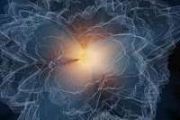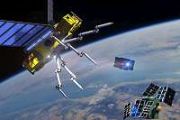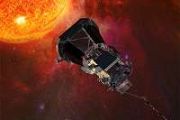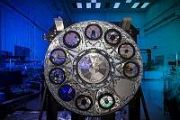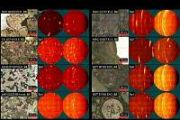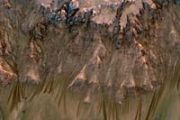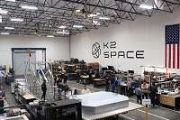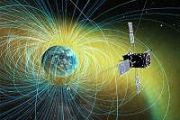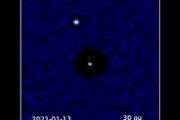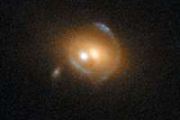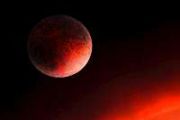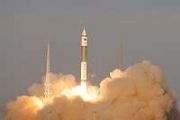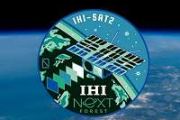
Copernical Team
Is SpaceX's Stock Price Affected by Trump's Supportive Politics over Bitcoin?
 If there are people and trends that are currently shaping the world, it would have to be the new President of the USA, Donald Trump, and his trusted advisor, billionaire inventor and entrepreneur, Elon Musk. Musk's SpaceX company is another big name everyone knows, and so is Bitcoin, the leading cryptocurrency. But how are they connected, and why do they depend on each other for success and a sa
If there are people and trends that are currently shaping the world, it would have to be the new President of the USA, Donald Trump, and his trusted advisor, billionaire inventor and entrepreneur, Elon Musk. Musk's SpaceX company is another big name everyone knows, and so is Bitcoin, the leading cryptocurrency. But how are they connected, and why do they depend on each other for success and a sa Bid to relocate US Space Shuttle Discovery faces museum pushback
 Tucked inside President Donald Trump's flagship tax and spending bill last month was a little-noticed provision to relocate the iconic Space Shuttle Discovery from a museum outside Washington to Houston.
The plan now faces legal uncertainty, with the Smithsonian Institution arguing Congress had no authority to give away what it considers private property - even before accounting for the ste
Tucked inside President Donald Trump's flagship tax and spending bill last month was a little-noticed provision to relocate the iconic Space Shuttle Discovery from a museum outside Washington to Houston.
The plan now faces legal uncertainty, with the Smithsonian Institution arguing Congress had no authority to give away what it considers private property - even before accounting for the ste SpaceX Crew Dragon docks with International Space Station
 An international team of four astronauts aboard a SpaceX Crew Dragon capsule docked Saturday with the orbiting International Space Station (ISS).
"Docking confirmed!", SpaceX posted on social media, along with a video showing the spacecraft making contact with the ISS at 2:27 am Eastern Time (0627 GMT), far above the southeast Pacific Ocean.
American astronauts Zena Cardman and Mike Finc
An international team of four astronauts aboard a SpaceX Crew Dragon capsule docked Saturday with the orbiting International Space Station (ISS).
"Docking confirmed!", SpaceX posted on social media, along with a video showing the spacecraft making contact with the ISS at 2:27 am Eastern Time (0627 GMT), far above the southeast Pacific Ocean.
American astronauts Zena Cardman and Mike Finc Moonquake hazards raise concern for future long-term lunar missions
 A new study has identified moonquakes-not meteor strikes-as the primary cause of surface disturbances in the Taurus-Littrow valley, the Apollo 17 landing site. The research suggests that ground shaking from these quakes, which repeatedly struck over millions of years, triggered boulder falls and landslides that reshaped the lunar terrain.
Published in Science Advances, the study was co-aut
A new study has identified moonquakes-not meteor strikes-as the primary cause of surface disturbances in the Taurus-Littrow valley, the Apollo 17 landing site. The research suggests that ground shaking from these quakes, which repeatedly struck over millions of years, triggered boulder falls and landslides that reshaped the lunar terrain.
Published in Science Advances, the study was co-aut Rocket Lab to Launch Fifth Electron Mission for iQPS Earth Imaging Constellation
 Rocket Lab has announced the scheduled launch window for its next mission for the Institute for Q-shu Pioneers of Space, Inc. (iQPS), marking the 69th flight of its Electron rocket and the company's 11th launch of 2025.
The mission, titled 'The Harvest Goddess Thrives', will lift off from Launch Complex 1 in New Zealand with a window opening on August 5, 2025 UTC. It will carry QPS-SAR-12,
Rocket Lab has announced the scheduled launch window for its next mission for the Institute for Q-shu Pioneers of Space, Inc. (iQPS), marking the 69th flight of its Electron rocket and the company's 11th launch of 2025.
The mission, titled 'The Harvest Goddess Thrives', will lift off from Launch Complex 1 in New Zealand with a window opening on August 5, 2025 UTC. It will carry QPS-SAR-12, 4D images show heat shield damage goes below the surface
 Rather than completely burning up when a spacecraft reenters Earth's atmosphere, its heat shield's outer surface is sacrificed to protect the rest of the vehicle. The carbon fibers decompose, dissipating the heat. It was assumed that this only happens on the surface, but in a recent study, researchers from The Grainger College of Engineering, University of Illinois Urbana-Champaign and four othe
Rather than completely burning up when a spacecraft reenters Earth's atmosphere, its heat shield's outer surface is sacrificed to protect the rest of the vehicle. The carbon fibers decompose, dissipating the heat. It was assumed that this only happens on the surface, but in a recent study, researchers from The Grainger College of Engineering, University of Illinois Urbana-Champaign and four othe SpaceX Crew-11 launches to International Space Station
 The SpaceX transport of Crew-11 to the International Space Station launched Friday after Thursday's scrub.
NASA astronauts Zena Cardman and Mike Fincke, Japan Aerospace Exploration Agency astronaut Kimiya Yui, and Roscosmos cosmonaut Oleg Platonov, arrived at the launch complex, where SpaceX's Dragon spacecraft was ready for liftoff at 11:43 a.m. EDT Friday. Cardman is the commander, Fi
The SpaceX transport of Crew-11 to the International Space Station launched Friday after Thursday's scrub.
NASA astronauts Zena Cardman and Mike Fincke, Japan Aerospace Exploration Agency astronaut Kimiya Yui, and Roscosmos cosmonaut Oleg Platonov, arrived at the launch complex, where SpaceX's Dragon spacecraft was ready for liftoff at 11:43 a.m. EDT Friday. Cardman is the commander, Fi Week in images: 28 July - 1 August 2025

Week in images: 28 July - 1 August 2025
Discover our week through the lens
Weather scrubs Crew-11 launch, NASA and SpaceX to try again Friday
This request seems a bit unusual, so we need to confirm that you're human. Please press and hold the button until it turns completely green. Thank you for your cooperation!
Press and hold the button
If you believe this is an error, please contact our support team.
185.132.36.159 : 09c42604-e3db-462a-a638-b935a391
Webb takes a fresh look at a classic deep field
 Image:
Webb takes a fresh look at a classic deep field
Image:
Webb takes a fresh look at a classic deep field 



